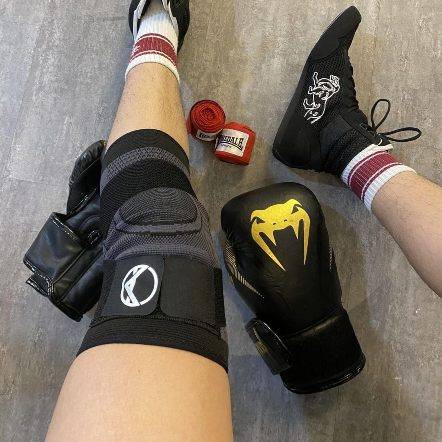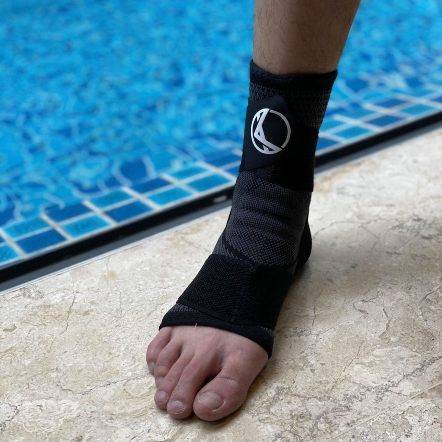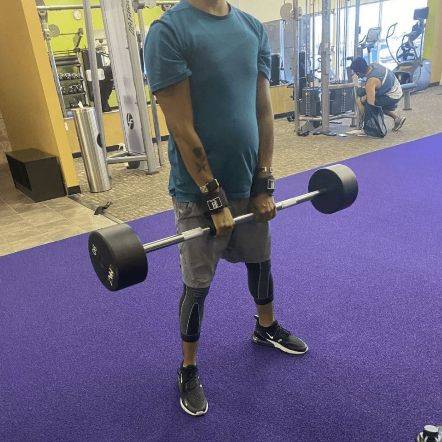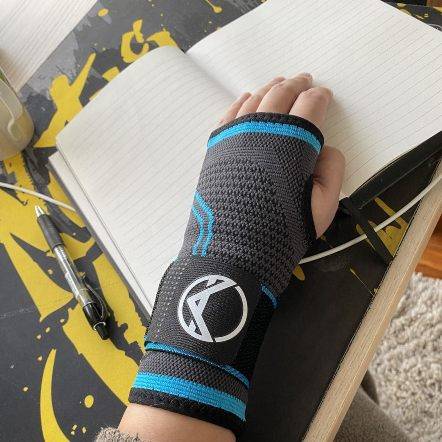
November 27, 2023 | 3 Mins Read
TABLE OF CONTENTS
If you suffer from the debilitating effects of plantar fasciitis, you know how excruciatingly painful it can be to take a single step. The sharp stabbing pain radiating through your heel with every movement is both physically and emotionally draining – not to mention the annoying twisting sensation, which makes it difficult for an affected person to walk even short distances.
Luckily, though, there are several strategies that have proven effective in helping reduce symptoms quickly - so if you’ve been searching for relief from this condition then read on! This post will outline our top remedies and treatments that have been successful in curing plantar fasciitis in just one week.

Plantar fasciitis is a medical condition characterized by inflammation of the plantar fascia, the fibrous tissue that extends from the heel to the toes on the underside of your foot. This band of tissue acts like a bowstring, supporting the arch of your foot and absorbing the shock as you walk. When it becomes inflamed, it causes the hallmark symptom of plantar fasciitis: a stabbing pain in the bottom of your foot near the heel.
Here's a deeper look at the key aspects of plantar fasciitis:
Plantar fasciitis can be a debilitating condition, but fortunately, there are several strategies that have been proven to help reduce symptoms and even cure the condition in just one week. In addition to understanding the key aspects and risk factors, it's important to know how to treat plantar fasciitis. This section will outline some of the most effective plantar fasciitis treatment strategies that have been successful in providing relief and promoting healing.
The first actionable step in addressing plantar fasciitis pain is to give your foot the rest it needs. Cease activities that aggravate your foot, especially those that involve prolonged standing or walking. Elevate your foot to decrease blood flow to the inflamed area, which can help manage and reduce swelling.
Complementing rest with ice application is a proven tactic to combat inflammation. Apply a cold pack wrapped in a thin towel to protect your skin; direct ice contact can cause frostbite and damage skin tissue.
Do this for 15-20 minutes at a time, repeating the process three to four times a day. The cold helps to constrict blood vessels, reducing inflammation and numbing the area to dull pain. It’s essential to maintain this regimen consistently for a few days, as intermittent icing will not provide the same level of relief.
Incorporating stretching exercises into your daily routine addresses the tightness and stiffness that contribute to plantar fasciitis pain. Key stretches focus on the calf muscles and the plantar fascia.
It's important to perform these stretches slowly and with control to avoid overstretching, which can exacerbate plantar fasciitis symptoms. Consistent stretching, done both in the morning and throughout the day, can provide significant relief from the pain and tightness associated with plantar fasciitis.
Strengthening the muscles around your foot can create better stability and support for your arch, easing the burden on your plantar fascia. Simple exercises like toe curls, where you curl your toes as if to pick up a small object off the floor, can be done anywhere, even under your desk at work.
Doming is another exercise where you try to create a dome shape with the bottom of your foot by pressing your toes downwards. This action strengthens the muscles in the arches of your feet. Aim to perform these exercises two to three times a day to gradually build strength in the supportive muscles.
Plantar fasciitis sleeves, also known as compression socks or foot sleeves, have become increasingly popular in recent years for providing relief from plantar fasciitis pain. These garments are designed to compress the tissue of the foot and ankle, increasing blood flow and reducing inflammation.
They can be worn during activities that aggravate plantar fasciitis, such as running or standing for long periods, or even just during daily activities. Some people have found significant relief from wearing plantar fasciitis sleeves consistently, and they can be a helpful addition to your treatment plan.
Consulting a physical therapist can provide you with personalized guidance and support for your specific condition. They can assess your foot and create a targeted exercise plan that includes both stretching and strengthening. Additionally, they might employ taping techniques that support the arch and reduce strain on the plantar fascia.
Plantar fasciitis therapies may also introduce modalities such as ultrasound therapy, which can promote healing and reduce pain through sound waves that penetrate the affected tissues.

While conventional treatments for plantar fasciitis can be effective, some individuals may prefer to explore alternative remedies. These options often focus on natural or holistic methods and can provide additional relief and support for those suffering from plantar fasciitis. Below are some alternative remedies that have been known to help alleviate pain and promote healing in just one week.
Orthotic inserts can be instrumental in distributing pressure more evenly across your foot and providing much-needed support to the arch, reducing the strain on the plantar fascia.
Your diet plays a supporting role in healing from plantar fasciitis. Anti-inflammatory foods can contribute to reduced inflammation and support tissue repair.
Choosing the right footwear is essential. Shoes with proper arch support and cushioning can prevent additional strain on the plantar fascia.
Make conscious adjustments to your daily routine. Reduce activities that put excessive strain on your feet, such as running on hard surfaces or wearing high heels.
Knowing when to seek professional medical help is essential in treating plantar fasciitis effectively. Here are some signs that it may be time to see a doctor:
To prevent the onset of plantar fasciitis, it is essential to understand the risk factors and make lifestyle changes accordingly. Incorporating preventive measures into your daily routine can help reduce strain on the plantar fascia and prevent future flare-ups. Here are some strategies to consider:
By following these strategies and incorporating them into your daily life, you can reduce the risk of developing plantar fasciitis and maintain healthy feet.
Tackling plantar fasciitis within a week is a challenging goal, yet achievable with dedication to rest, icing, targeted exercises, and timely professional advice if needed. For additional support, consider the Koprez Plantar Fasciitis Sleeve to complement your recovery regime, offering the extra comfort needed for your journey toward healing. Take a step forward in managing your foot health by getting your own sleeve today.
Author

Claire Evans worked as the content marketing manager at Koprez. Claire combined a background of writing and editing, marketing, and patient education to best serve consumers, fitness enthusiasts, athletes, and anyone who relies on the Koprez brand for helpful information.
Koprez® Featured Products


"I sprain my wrist super often, so I decided to try out this sleeve. This is game-changing! I've been using it for a while now, and my wrists feel amazing. I haven't gotten in any injuries since using it too. It just makes my wrists feel so supported."
Alexis A.


"Use this for my boxing training. It is a very comfortable brace and does not move out of position during skipping ropes and sparring sessions. I use it while running too. Probably the best brace I've purchased throughout the years. It is very flexible. Makes me look like a pro! :)"
Samuel L.


"I've just got back to running after a couple of years of being plagued by injury. These compressions socks are helping give me peace of mind while I build up my distance again. They are the perfect level of compression, super comfy, and very high quality. Feel great while on a run, and looks great in the orange colour I have!"
Dave R.


"I have a weak ankle, and the Koprez ankle sleeve has been a lifesaver. Wear it every day. Super breathable and comfortable. Like wearing a cool sporty looking sock!"
James F.


"This is the best knee sleeve I've ever tried. It's now a must-have for all my exercises. A few years ago, I had an accident that damaged my knees, but with Koprez I can be active again with no knee pains at all. It's been truly amazing!"
Alex M.


"One of the best purchases I've ever made. It fits your legs all the way from top to bottom, great snug fit, gives you support and definitely helps during rehab and training."
Rafael A.


"I had a minor elbow injury, and Koprez sleeve was super supportive and definitely helped me recover faster. I still use the sleeve to prevent further injury. So far, so good. Very comfortable and does not feel hot at all. Highly recommend!"
Corey B.


"It's really been a game-changer for me. It allows me to exercise a lot longer than I used to. Now my knees don't hurt, and they're not uncomfortable at all."
Mike P.


"Great product!!"
Harold


"I have carpal tunnel, and this brace has helped me work pain-free. Love the materials, and I can feel my wrists slowly getting better, even when I don't wear them!"
Christopher J.


"I wanted to try out these sleeves to improve my squats and deadlift in the gym without worrying about injuring my knees. They stayed up throughout the entire gym session, and my knees feel super supported. Now I can do what I love for years to come. "
Corbin C.